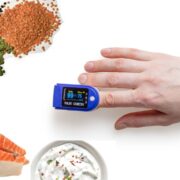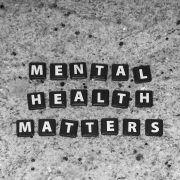Technology in the last few years has enabled us to closely monitor our health. From wristbands that track heart rate and steps to personal blood pressure checkers to body fat measuring weighing scales, wearable technology in healthcare is changing the way we process our biology.
Wearable technology solutions have caught on like wildfire. People don’t seem to get enough of what their smart wristband coupled with their mHealth app can do! And it is only going to get more popular. A survey states that over 75% of respondents think that wearable healthcare monitoring devices should become ubiquitous so that it motivates them to lead healthier lives.
While the global healthcare wearables market was valued at over USD 5 billion in 2016, it is expected to witness a compound annual growth rate of over 17% and reach a value of over 12 billion by 2021. Source MarketsandMarkets
With so many things being considered wearables, what really are they and how do they function?
Wearable devices can be defined as technology-infused devices that can be worn on the human body. They could be smart wristbands, watches, shoes, shirts, caps, necklaces, headbands, eyeglasses, etc. These smart devices contain some sort of sensors that help in gathering/collecting raw data and relaying it into a database or software. Through this software, we can gather insights and analyze our health.
The insights or analysis that is obtained is usually responsive. The insights can alert the person wearing the smart device or a physician who can then take corrective action. Simultaneously, nutritionists can view the data and advice a better diet plan, based on activity level and aliments.
Similarly, the internet of things in healthcare is solving many challenges. IoT or Internet of Things solutions impacted numerous industries, and the technology left its mark wherever it went. Businesses that have failed to integrate IoT devices into their processes run the risk of being left behind.
Now that we know that IoT devices are the vouge, let’s discuss what they mean for the healthcare industry. IoT devices within healthcare are expected to grow at a compound annual growth rate of over 35% during 2015-2020. IoT healthcare devices improve the lives of millions of patients and people worldwide. The growth rate is only propelled by the increase in demand for remote monitoring healthcare systems.
One of the benefits of IoT in healthcare is that it allows for personalized attention from medical professionals. IoT devices also help in counting calories, check blood pressure levels, remind patients of their appointments, etc.
Now you must be thinking that these are the exact same things that wearable devices can do, so what then is the difference? Wearable devices are a part of the broader/collective term Internet of Things.
As mentioned above, IoT devices ease the lives of not just patients but also doctors & nurses across the world. Here are a few ways how IoT technology solutions for healthcare are reshaping the way hospitals function:
Location-based real-time services:
Through IoT, healthcare professionals can track the patient whereabouts. This is particularly useful when an injured person is coming in for an urgent medical assistance. Additionally, within the hospital medical apparatus such as defibrillators, scales, wheelchairs, other monitoring devices, etc. can be tagged with IoT sensors to locate them easily. IoT devices help in real time environmental monitoring as well – such as checking room temperature.
Improve patient experience:
IoT devices help in improving the patient experience. Due to their seamless connection between devices, patients can control the room temperate and lighting, communicate with their friends, and family via video calling, and call nurses via intercom. IoT also allows for easy access patient information from the cloud by medical staff provided they are stored there in to begin with.
Hygiene compliance:
For hospitals, preventing infection is imperative. And given that thousands of sick and infected patients walk in every day, how do hospitals follow strict hygiene. Practicing hand hygiene is one of the best ways of preventing infections. Hand hygiene monitoring systems help in setting and detecting a degree of cleanliness among healthcare and medical staff. The simplest function of hand hygiene IoT devices is to beep whenever medical staff comes in close proximity of a patient bed without washing their hands. The communication between these hand hygiene monitoring systems is in real-time, hence there would not be any solecisms.
Remote Monitoring
Remote monitoring of health is a crucial application of IoT. Constant monitoring helps in giving adequate healthcare to patients. Globally, many individuals die as they do not receive timely medical attention. IoT can help solve this. IoT devices can apply complex algorithms and analyze them. This helps in providing better medical attention and care to patients in remote areas – usually places where doctors cannot physically go.
Monitoring also cuts down on costs. It prevents misdiagnosis and hospital readmission. This is an advantage for senior citizens. And as IoT devices and wearables are simple to use, patients can go about their daily routine without much trouble.
IoT in healthcare is expected to further the scope of research. IoT devices simplify workflows through proper analysis.
IoT also includes healthcare apps development. They provide cutting-edge personalized solutions and diagnoses to patients based on their symptoms. Apps can be used to remind patients to take their medication. They also help and increase medication compliance.
Risks of IoT in healthcare:
Although IoT and wearables are considered a boon for the healthcare industry, there are many challenges that companies should address. The first and possibly the most serious of challenges is privacy. As most of the data is being moved to the cloud, it wouldn’t take long for private and sensitive data to fall into the wrong hands.
If shared inappropriately, patient health information can ruin careers and damage the reputations of organizations. In addition, expanding, digitization, and streamlining of healthcare processes is likely to strain data centers.
As monitoring services and apps fill the healthcare market, it is getting incredibly difficult for data centers to handle the influx of information. This is because monitoring services are usually coupled with predictive analysis, which means that a lot of computing power is required by both the clinician and patient. If a data center does not possess the dexterity to handle such computing loads, it would result in dissatisfaction from both sides.
IoT devices and wearables function by communicating with other devices. If this communication is not secure, it can lead and cause data leakage. Industry standards need to be followed when creating a mHealth app.
Conclusion:
IoT devices and wearables are here to stay. Their popularity and usage are expected to significantly rise over the next few years. And as healthcare providers are constantly trying to increase their offerings, it is safe to say that both IoT and wearables will become a big part of the healthcare industry. However, organizations that develop mHealth apps should aim to follow industry standards during the conceptualization stages itself.
-

1 3 Essential Minerals Your Body Needs
-

2 Foods to Control Blood Pressure Instantly: A Quick Solution to Increase and Decrease Blood Pressure Naturally!
-

3 Facing Skin Issues this Winter? Follow these Dermatologically Recommended Tips for a Smooth Skin!
-

4 Unveiling the Reality of the Common Myths about Heart Health and Exercise
-

5 Life Hacks That Could Improve Your Mental Health
-

6 Can One Maintain Complete Focus at All Times?
-

7 FGR: Condition That You Should Know During Pregnancy
-

8 Know the Different Ayurvedic Eye Treatments that can Solve Eye Issues
-

9 How Much Weight Can You Ideally Lose With CLA?
-

10 Monkeypox Patient Talks About How It Feels to be Suffering from the Condition

